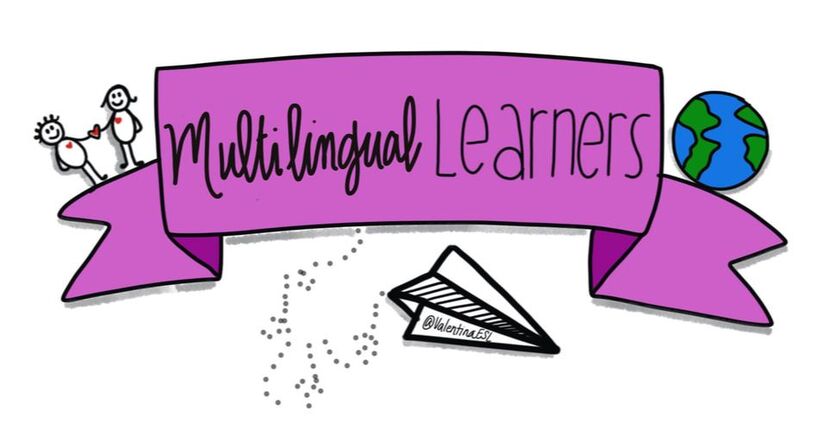|
I started teaching in the winter of 1997. Hired in a wonderful suburban district outside of Houston, Texas. The campus experienced a little growth and needed a teacher mid year, so I was the lucky one hired in December just as I received my college diploma and teaching certification. My college pre-service classes taught me little about what the classroom experience would truly be like. And with wide-eyes I walked into my first classroom and found myself teaching third graders who had a myriad of needs I was ill prepared for. Some students needed special education support, others dyslexia, and some were learning English. I quickly found that the big white binder of curriculum didn’t hold the answers I needed to give these kids the support THEY needed. WE TAUGHT IN SILOS
It didn’t take long to notice that we taught in silos. English learners left the classroom daily for English language development support. Our campus had one designated teacher who pulled students out to deliver ELD instruction. It just so happens that this was her first year in a new role too and I learned that she would be retiring in a couple of years. I wondered what she did with them. What were they learning? Were they focusing on the same curriculum we were? Did they have different curriculum? What was the room like? Were there other students there? I just wondered so much about it. And then I wondered if the ESL teacher knew what we were doing in here. Did she know what we were studying in math, reading, writing, social studies, and science? One thing I knew for sure is that her job consisted of a lot of paperwork. I knew this because she shared that with us in passing many times and I had to sign a lot of it too. I came to realize that she didn’t know what I was doing with the class and I didn’t know what she was doing with the kids she took. And to be honest neither of us did anything about it for a long time. One day, I walked by her classroom while my students were in art class. And I peeked my head inside. There they sat in a small group. The ESL teacher sat in front of the students leading them in a discussion about the weather and today’s date. That was then...This is now Decades ago, the role of the ESL teacher was very isolated. In some areas it still is. But I encourage you to rewrite the narrative. Given the world we live in now, there are so many ways for all educators to be part of a community either within their school walls or outside of them. We no longer have to teach in silos. It's a choice. If you are the only ESL teacher in your building and you feel you are in a silo, here are some ways to build collaborative partnership.
ESL teachers, we must be the cream of the crop! We are serving students that are acquiring English and learning new content at the same time. There is a sense of urgency. We don’t have time to waste. Our lessons and guidance has to be efficient and effective. Therefore, ESL teachers have to be leaders in the field. A leader is not a title, it’s a way of doing things. As an ESL leader, we model great teaching, attend professional learning, stay up to date with compliance and instruction, and we advocate for our students and families. If you are an administrator reading this, I encourage you to think carefully about who you place in this critical position. Who you place in this position can change the way ELs and their families are perceived and may shift the overall academic achievement of ELs. Back in the day, the ESL position was paperwork heavy. There were days, sometimes weeks, when the ESL teacher would have paperwork to do and not be able to see students. Technology has changed the paperwork load. Thankfully, less paperwork means students are seen and served more. We are freed to use this time to model in classrooms, work with families, provide professional development and much more. Several years ago I heard a couple of teachers talking in the hall after school. They were discussing a project and one teacher said, “Oh I can’t do that. I have the ELs. You have the GT kids, that’s why you can.” I’ll never forget those words and that teacher’s deficit perception of English learners. Foolishly, she thought ELs needed to be fixed. She thought there was something wrong with students who were adding English. On the flip side, what we know is that ELs add to our classroom environment, they enrich instruction, they add value to vocabulary, experiences, and points of view. We hold the pen so we get to write the narrative for our roles as ESL teachers. It may be that years ago ESL teachers were perceived one way, but that does not mean it always has to be that way. Let’s get busy rewriting the narrative.
12 Comments
Michelle Shory
5/16/2020 09:40:45 am
This is beautiful and empowering, Valentina! Thank you!!
Reply
5/16/2020 02:33:12 pm
Thanks for this great post. I love your emphasis on collaboration with other teachers. I’m trying to change my schedule this year to allow for more targeted pull-outs that respond to specific needs in the mainstream classroom.
Reply
VALENTINA GONZALEZ
5/17/2020 01:41:36 pm
That's awesome, Jordan. I think with each passing year we grow stronger and learn new ways to increase our impact on students' success.
VALENTINA GONZALEZ
5/17/2020 01:40:22 pm
Thank you for reading and for your feedback, Michelle. I appreciate what you do for our students and educators. Valentina
Reply
Tan K Huynh
5/20/2020 04:51:00 am
Thank you for this article, Valentina. In collaborating with others on behave of language learners, that's where we change the narrative around what language learners can do because we create the conditions for asset-based mindsets to grow.
Reply
Angel Callahan
5/17/2020 07:29:33 am
This is wonderful! I will be sharing with my colleagues.
Reply
Caz
5/17/2020 11:39:14 am
Right on!!!
Reply
Anna
5/17/2020 12:27:13 pm
Hi! I like this post, except for two sentences where you write about how as ESL teachers we should collaborate with teachers/educators we “serve”— I don’t serve the other teachers. I serve the students.
Reply
VALENTINA GONZALEZ
5/17/2020 01:44:32 pm
Thank you for reading, Anna. For some educators this may be true. You may solely work with students. Others may solely work with teachers. And some may do a combination of the two. Thank you for sharing your perspective. And thank you for the work you do to support students.
Reply
Maggie
5/17/2020 07:03:28 pm
Yes! Asset vs. Deficit... This is one of the things we are working on at my school. Our ELs are not broken and they CAN do it! :-)
Reply
Amy
5/21/2020 09:59:07 am
Love the idea of an ESL newsletter for our collaborating teachers!
Reply
Delia Eugenia Baker
9/10/2021 01:07:18 pm
I really appreciate everything you do for Bilingual/ESL Education. I would love to continue with my Education and to accomplish to finish my Teaching certification. Reading your post is telling me to go for it!
Reply
Your comment will be posted after it is approved.
Leave a Reply. |
Categories
All
|


 RSS Feed
RSS Feed
